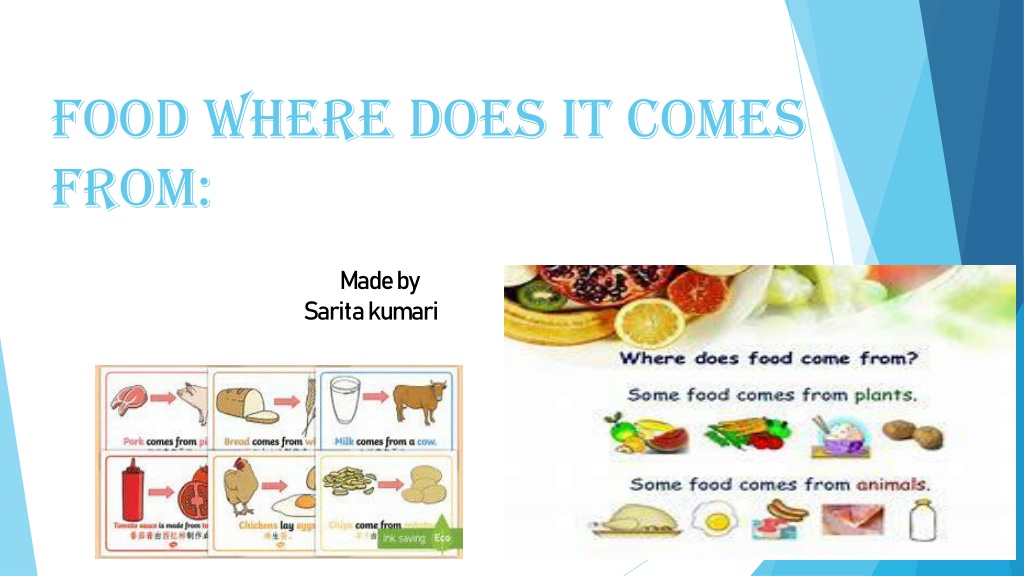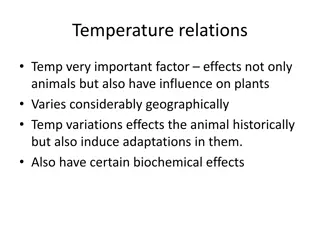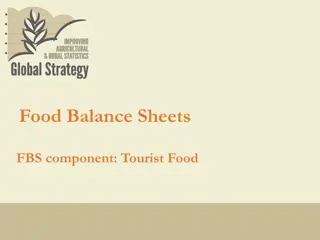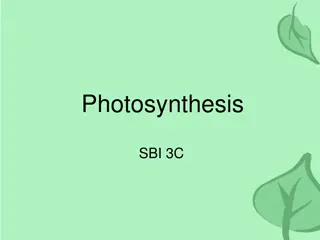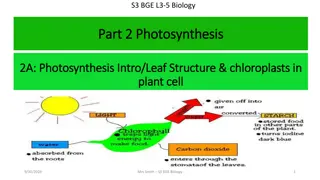Understanding Food Sources: Plants and Animals Explained
Food is essential for nourishing our bodies, and it comes from either plants or animals. Plants provide fruits, vegetables, grains, and more, while animals offer products like meat, milk, and eggs. Different parts of plants, such as roots, stems, and leaves, are consumed as food. Animals have varied diets, classified as herbivorous, carnivorous, or omnivorous. Understanding where our food comes from helps us make informed choices for our health.
Download Presentation

Please find below an Image/Link to download the presentation.
The content on the website is provided AS IS for your information and personal use only. It may not be sold, licensed, or shared on other websites without obtaining consent from the author. Download presentation by click this link. If you encounter any issues during the download, it is possible that the publisher has removed the file from their server.
E N D
Presentation Transcript
Food where does it comes from: Made by Sarita kumari
Introduction Anything that an animal, plant, or human eat to nourish their body for proper growth and maintenance is called food. To cook food we need different kind of ingredients. For example: to cook boiled rice, you need only two ingredient water and rice.On the other hand to prepare vegetable curry, you need vegetable, spices, salt, oil and other ingredients. Ingredients are components used to prepare food.
Food materials and sources The food that we consume is obtained from mainly two sources: plants and animals. Food obtained from plants: Fruits, vegetables, grains, pulses, cereals. Food obtained from animals: Egg, meat, milk, beef, fish, chicken, pork, prawns.
plant parts as food We eat many leafy vegetables. We eat fruits, stem, roots, and flowers of some plants. Some plants have two or moreedible (eatable) parts. For example: seeds of mustard plants give us oil and the leaves are used as a vegetable. Not all the plants are edible, some may be poisonous too. For example: Oleander, Castor bean, DaturaStramonium, Dieffenbachia.
Sprouts ofmoong dal andchana is eaten as a healthy snacks. Note:Sprouts is the white root like structure coming out of seeds when soaked in water overnight.
Carrot, Ginger, Radish, Onion, Beet root etc. are the example of edible root of plants. Cinnamon is an example in which bark of tree is used as a spice. Animal product as food Honey is an edible viscous liquid formed by bees in bee hive. Bees collect nectar, which is sweet juice from flowers and convert it into honey and store in their hive. Milk and products of milk like cheese, yogurt, butter milk, ghee is obtained from milk producing animals Cow and Buffalo.
What do animals eat? Classification of animals based on nutrition: Herbivorous, Carnivorous, and Omnivorous. Herbivorous: Animals which eats only plants and products of plants. For example: Cow, Buffalo, Goat, Sheep, Donkey, Elephant, Giraffe, Deer, Camel etc. Carnivorous: Animals which eats other animals as food. For example: Lion, Tiger, Fox, Wolf, Shark etc. Omnivorous:Animal which eats both plants and animals as food. For example: Dog, rat, Crow, Pigs, Hens etc. Human beings can be herbivorous or omnivorous.
Malnutrition Malnutrition is a condition in which a person does not get enough nutrients for proper function of its body. This may be due to, if a person do not get enough food, or not eating enough food in right amount, or the body of a person is unable to utilize the food causing lack of proper nutrition.
Why we should stop wastage of food Food is a fuel to our body, without food we cannot perform any physical and mental act. Have you ever realize even a day without food? Billions of people in India, Bangladesh, Africa and many other countries were still starving. Loss and wastage occurs in all steps in the food supply chain. In developing countries like India, Bangladesh, most loss occurs during production, while in developed countries like USA, European countries much food is wasted at the consumption stage. In 2013, we disposed more than 35 million tons of food waste. Wastage of food also cause load on agriculture to produce more amount of food.
Benefits of not wasting food Saves money from buying less food. Due to disposal of food large amount of methane is released and methane gas contributes in global warming. Conserves energy and resources, preventing pollution involved in the growing, manufacturing, transporting, and selling food. Supports community by providing donated food that would have otherwise gone to waste.
